Functional Anatomy of the Upper Extremity
1/55
Earn XP
Description and Tags
KINE 3050
Name | Mastery | Learn | Test | Matching | Spaced |
|---|
No study sessions yet.
56 Terms
The design of the shoulder complex is related to what?
directly to the overall function of the upper limb
What are the 3 articulations and 1 mechanism of the shoulder
Strenoclavicular Joint
Acromioclavicular Joint
Glenohumeral Joint
Scaupulothoracic Mechanism
The shoulder joint mechanism allows what?
placement, function and control of hand directly in front of the body
Shoulder movement involves integration of
static and dynamic stabilizers
The Sternoclavicular Joint articulation is?
Synovial
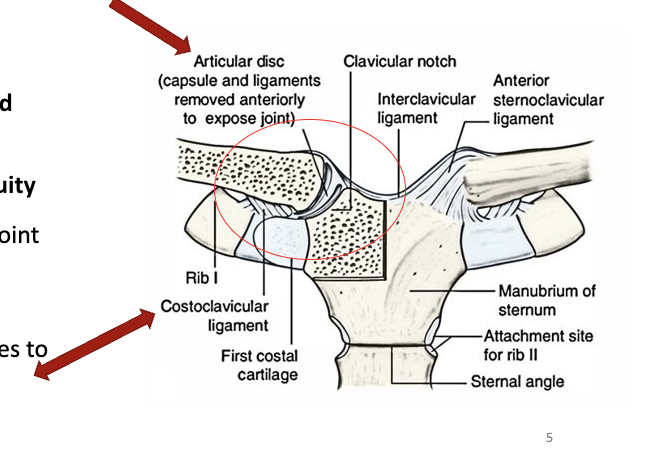
The Sternoclavicular Joint function resembles a
ball and socket articulation
The Sternoclavicular Joint articular surfaces lack?
congruity
The Sternoclavicular Joint articular disc separates what?
the joint into the superior and inferior compartment
In the Sternoclavicular Joint, the medial end of the clavicle attaches to what?
first rib and costal cartilage
The Sternoclavicular Joint stabilizing structures function to ?
Resist the tendency for medial displacement of the clavicle
Limit the clavicular component of arm movement via the articular disc and the costoclavicular ligament
The Sternoclavicular Joint articular disc and its attachment function as a?
hinge
Stabilizes the joint against applied forces to the shoulder that are transmitted medially through the clavicle to the axial skeleton
In the Sternoclavicular Joint, areas of compression are between?
articular surfaces and intra-articular discs vary clavicular motion
The clavicle does what?
Elevates, Depresses, Protracts, or Retracts
Elevation & depression → motion between clavicle & disc (shoulder shrugs)
Protraction & retraction → motion between disc & sternal end ( Rows )
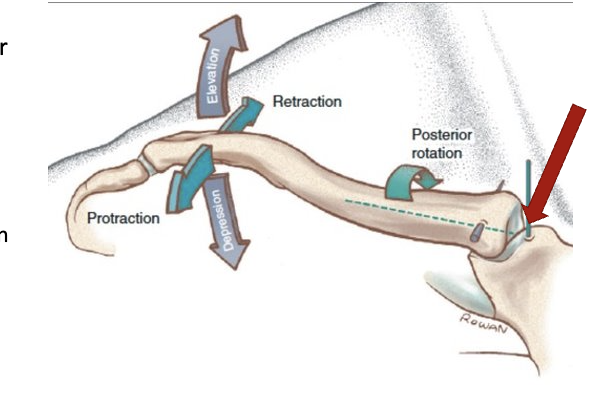
In the Sternoclavicular Joint, ligaments are on same side are ____________ and opposite side are _________?
lax ; taut
Forces acting on the clavicle from the upper limb
rarely cause dislocation of the sternoclavicular joint

Excess applied force to the clavicle are most likely to cause what?
a fracture medial to attachment of the coracoclavicular ligament
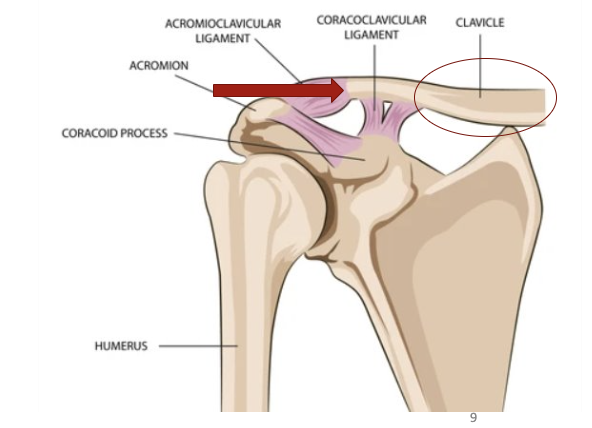
The Acromioclavicular Joint is a ________ plane joint
synovial
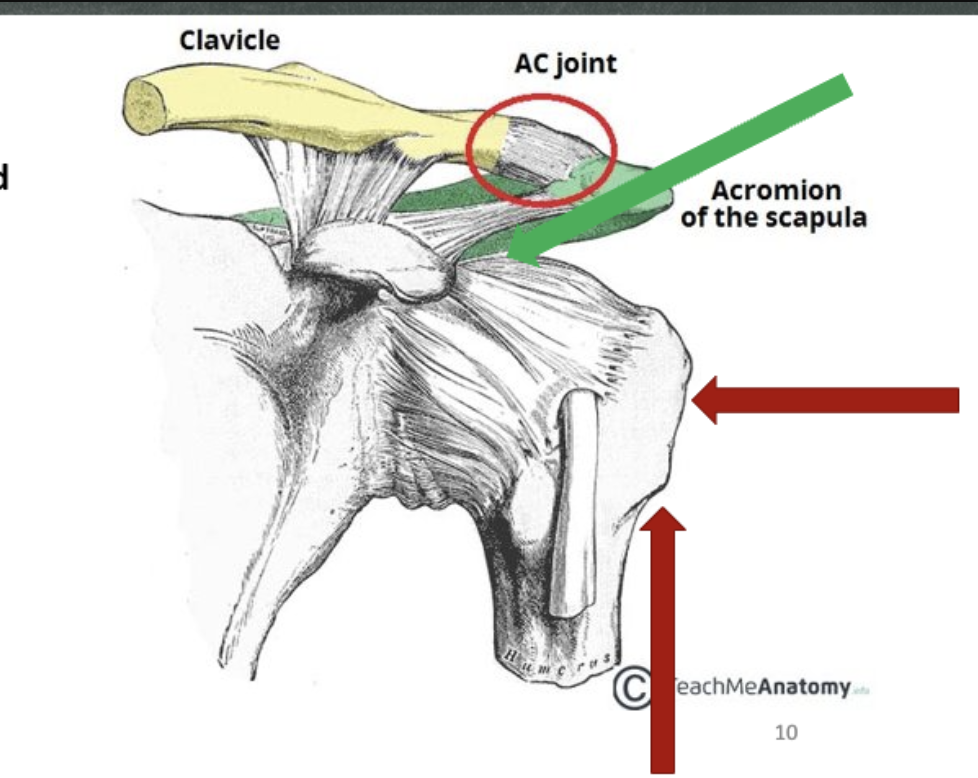
The Acromioclavicular Joint line is
oblique and slightly curved
forces transmitted through the arm will tend to drive the acromion UNDER the distal end of clavicle
The Acromioclavicular Joint contributes to
total arm movement
The acromioclavicular ligament stabilizes
the joint and binds the clavicle to the scapula
The Coracolavicular Ligament has 2 parts
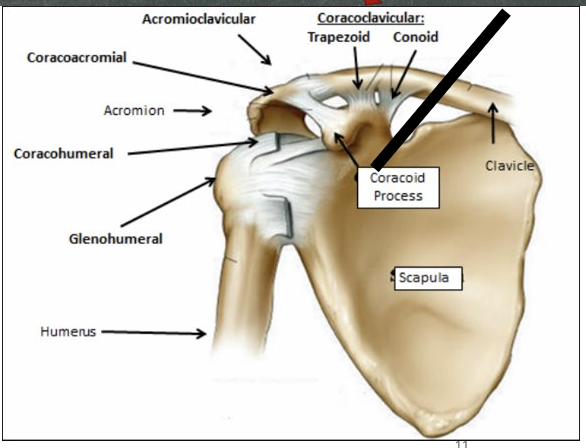
Trapezoid Ligament
Conoid Ligament
A fall on the outstretched hand would tend to drive the
acromion UNDER the clavicle because of the tilt of the articular surfaces
resisted by the trapezoid ligament

During full abduction (180 degrees) of the arm, the clavicle rotates ?
50 degrees axially
Permits the glenoid fossa of scapula to continue to elevate and increase the possible degree of arm elevation
When the clavicle is prevented from rotating, the arm can be abducted actively to only 120°
Movement of the Acromioclavicular Joint is an important component of
total arm movement
In the Acromioclavicular Joint, what are the 3 degrees of freedom?
vertical axis
frontal axis
sagittal axis
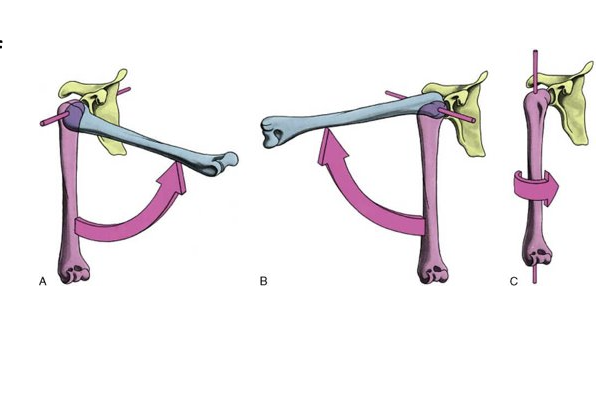
What are the movements at the Acromioclavicular Joint
Gliding Motion: shoulder flexion/extension
Elevation and Depression: relationship between scapula and humerus
The Glenohumeral Joint is what kind of joint?
multiaxial ball and socket synovial joint
Only part of the humeral head articulates with the glenoid fossa in any position of the joint
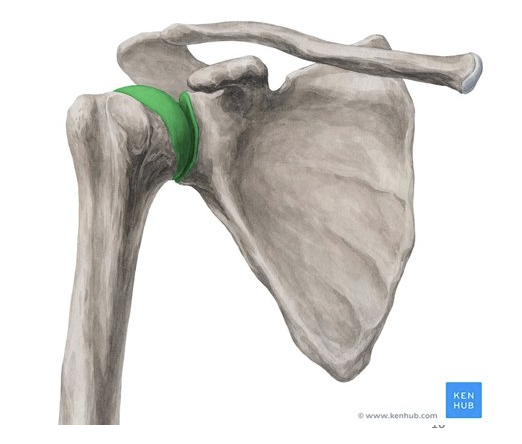
The Glenohumeral Joint surface makes an angle of
130 degrees to 150 degrees with the shaft
Retroverted about 30° to 40° with respect to the axis of flexion of the elbow
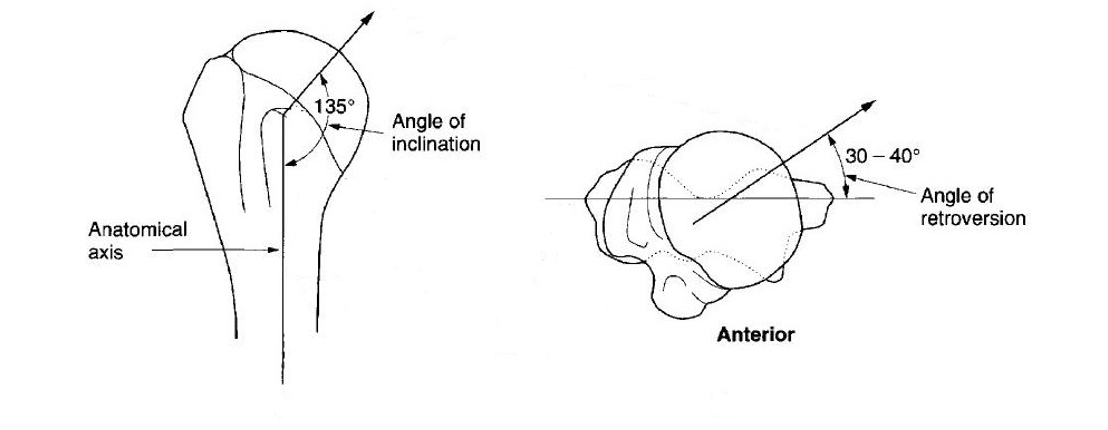
In the Scapulothoracic Mechanism, without bony or ligamentous attachments to the thorax, its a
physiologic joint
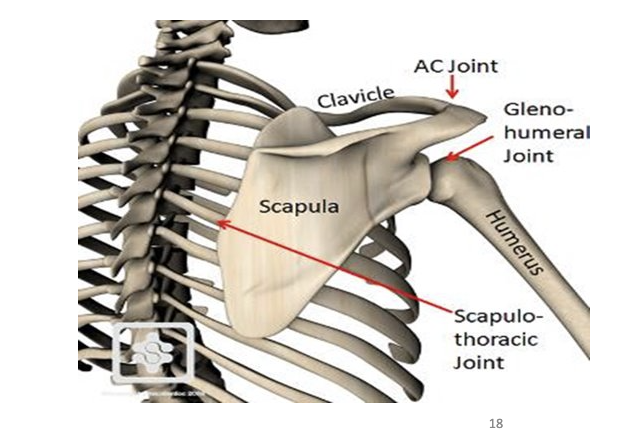
The scapula can be
protracted, retracted, elevated, depressed, and rotated about a variable axis perpendicular to its flat surface
The Glenoid Labrum is a
Fibrocartilaginous tissue attached around the margin of the glenoid fossa
Shape of the labrum adapts to accommodate rotation of the humeral head
Adds flexibility to the edges of the glenoid fossa
Joint capsule surrounds what
the joint
Maintenance of normal glenohumeral relationship depends on:
Reinforcement of capsule by ligaments
Attachment of muscle tendons of rotator cuff
Superior capsule and coracohumeral ligament do what
Strengthen superior aspect of the joint
Resist the effect of gravity on the dependent limb
The coracohumeral ligament is what
one of the most important ligamentous structures
Located anterior to the vertical axis about which the humerus rotates axially
Checks lateral rotation and extension
What is the anterior aspect off the Glenohumeral Ligaments?
thickened parts of capsule
The Superior glenohumeral ligament assists in
preventing downward displacement of the humeral head
The Middle glenohumeral ligament limits
lateral rotation up to 90° abduction
Anterior stabilizer of the shoulder joint
The Inferior glenohumeral ligament supports
joint in abduction
Prevents anterior subluxation and dislocation
The Coracoacromial Ligament/Arch is an important
protective arch
Forms a secondary restraining socket
Protecting joint from trauma from above
Prevents dislocation of humeral head superiorly
Abduction and Flexion of the Coracoacromial Ligament/Arch
Greater tuberosity of the humerus may apply pressure against the anterior edge
Inferior surface of anterior third of the acromion and coracoacromial ligament
Scapularthoracic Motion Equation
SC Motion + AC Motion
Shoulder Motion Equation
ST Motion + GH Motion
What are the rotator cuffs?
Supraspinatus (superiorly)
Infraspinatus (posteriorly)
Teres MINOR (posteriorly)
Subscapularis (anteriorly)
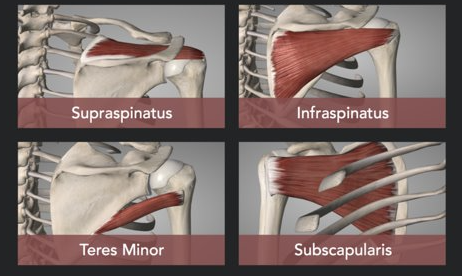
The rotator cuffs are what kind of units ?
Dynamic and Compound Musculotendinous
Plays an essential role in movements of the glenohumeral joint
The Subacromial/Subdeltoid Bursa does not communicate with the
joint
Communication may develop if the rotator cuff is ruptured
The in first 30 degrees of arm elevation, the humeral head is
translating as
sliding and displacing
After the first 30 degrees of elevation of arm, there is movement in the
scapulothoracic mechanism
The in first 30 degrees of arm elevation, the movement of motion is in the
glenohumeral joint
Elevation of the arm/abduction is movement in
Glenohumeral and Scapulothoracic
The Subscapular bursa communicates with
the joint cavity between the superior and middle glenohumeral ligaments
Movements of Shoulder Complex has a
extensive range of movement
Movements of the Humerus and Scapula occur due to
Convex ovoid surface (head of humerus) relative to
Concave ovoid surface (glenoid fossa)
The articular humeral head does what
rolls, slides, and spins
What is the plane of scapula
30-45 degrees anterior to frontal plane
Movements of humerus in relation to the glenoid fossa:
Frontal and coronal planes
Plane of the scapula